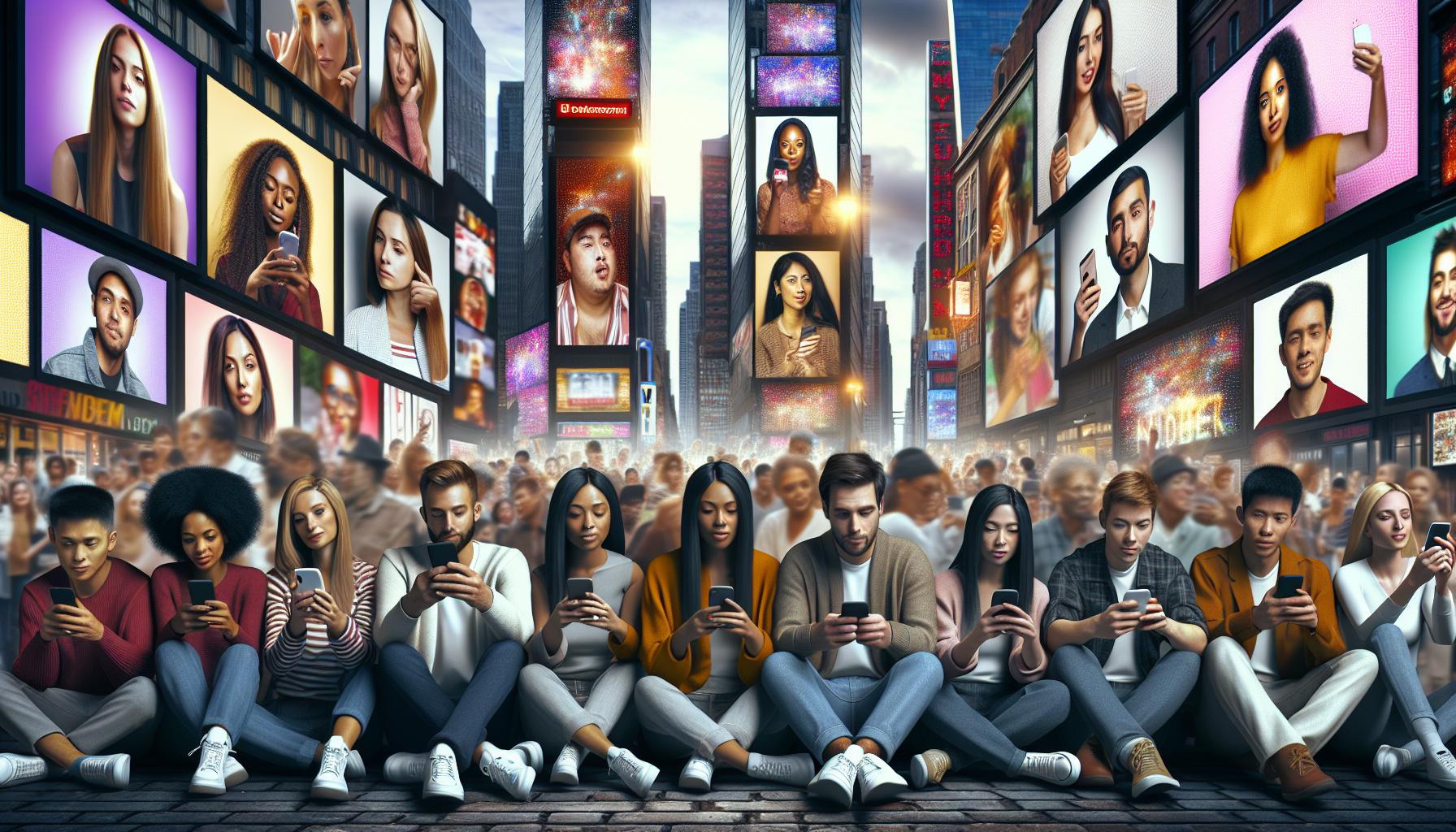In 2018, social media took a wild turn, and if you weren’t paying attention, you might’ve missed the party. From the rise of video content that had everyone channeling their inner Spielberg to the explosion of memes that made even the grumpiest cat crack a smile, this year was a rollercoaster of trends that shaped the digital landscape.
2018 Social Media Trends
Growth characterized 2018 social media trends. Video content emerged as a dominant format, capturing user engagement effectively. Platforms like Instagram and Facebook reported a significant rise in video views, creating opportunities for brands to showcase products creatively. Additionally, live streaming gained momentum, with more than 80% of users preferring live video over standard posts.
Memes also played a crucial role in user interaction. These humorous images, often paired with relatable text, spread rapidly across various platforms, fostering community engagement and brand loyalty. According to statistics, meme-sharing increased by approximately 50% compared to the previous year, signifying their cultural relevance.
Businesses adopted these trends strategically. Marketers utilized video content to enhance storytelling, aiming to connect with audiences on a deeper level. They integrated memes into campaigns to reach younger demographics, understanding the importance of relatable content.
Privacy concerns shifted social media strategies in 2018. Users became more discerning about their data, prompting platforms to prioritize transparency and control. Many companies adjusted policies to ensure user trust, implementing stricter privacy measures.
Overall, 2018 marked a transformative year for social media with video content and memes shaping digital interactions. Trends reflected users’ preferences, driving innovation in communication methods and marketing strategies.
Key Trends Shaping Social Media in 2018

2018 social media trends saw transformative trends that defined user interactions and brand strategies.
Rise of Video Content
Video content took center stage, establishing itself as the leading format for user engagement. Platforms like Instagram and Facebook recorded significant increases in video views, while live streaming became a preferred option for over 80% of users. Companies recognized the potential of video storytelling and incorporated it into marketing campaigns, ensuring messages resonated effectively. User engagement soared due to the visual nature of video, prompting a major shift in content strategies across various platforms.
Growth of Influencer Marketing
Influencer marketing gained significant traction, altering how brands reached their audiences. Collaborations between brands and influencers created authentic connections, building trust among target demographics. The effectiveness of this strategy contributed to a marked increase in brand loyalty, particularly among younger users. Brands that leveraged influencer partnerships experienced higher engagement rates, amplifying their reach in crowded digital spaces. This approach became essential to cutting through the noise in an evolving market.
Increased Emphasis on User Privacy
User privacy emerged as a critical focus for social media platforms. Heightened concerns regarding data security led to a shift in user behavior, with many becoming more selective about their personal information. In response, platforms prioritized transparency and implemented stricter privacy measures. This change aimed to rebuild trust between users and platforms, encouraging safer online experiences. Brands adjusted their strategies to align with this growing demand for accountability, ensuring compliance with new privacy standards.
Popular Social Media Platforms in 2018

In 2018, several social media platforms played significant roles in shaping digital interactions. The following highlights major platforms that defined the year.
Facebook remained a leader in social media, facilitating connections and community building. In 2018, video content captured attention, with views skyrocketing by over 80%. Brands increasingly utilized live streaming to engage users in real time. Users expressed a growing preference for authentic content, prompting businesses to refine their strategies accordingly. Additionally, Facebook’s focus on privacy became paramount as it implemented stricter measures to appease concerned users. Transparency and data protection emerged as essential elements for maintaining user trust and loyalty.
Instagram continued its meteoric rise, largely fueled by visual content and interactivity. The platform saw a dramatic increase in video consumption, with users exhibiting higher engagement rates. Stories transformed storytelling, allowing users and brands alike to share snippets of daily life. Memes proliferated, enhancing brand relatability and fostering community connections. Over 50% more users shared memes compared to 2017, showcasing their impact on digital culture. Instagram’s emphasis on influencer marketing also reinforced authentic connections, opening new avenues for brand visibility and user engagement.
Twitter maintained relevance by serving as a real-time news and communication platform. The character limit encouraged concise messaging, which attracted users looking for quick updates. Users engaged through hashtags, driving conversations and trending topics that shaped public opinion in 2018. The platform embraced video, capitalizing on the increasing demand for rich media content. Additionally, Twitter focused on combating abuse and harassment, striving for a safer environment. This commitment contributed to user retention, as those concerned about online safety appreciated the improvements.
Impact of Mobile Usage on 2018 Social Media Trends

Mobile usage significantly influenced social media dynamics in 2018. The majority of users accessed platforms via smartphones, resulting in a shift in content consumption patterns. Engagement rates soared, particularly for video content, which thrived on mobile devices. Visual storytelling became essential as over 80% of users preferred live streams over traditional posts.
Mobile applications advanced, facilitating seamless access to video sharing and meme creation tools. Platforms like Instagram focused on enhancing user experiences through mobile-friendly features, increasing video consumption by 90%. Meme-sharing exploded, generating approximately a 50% increase in activity compared to the previous year. Businesses recognized these mobile trends, adapting campaigns to target users effectively.
Brands utilized mobile-optimized video content to tell compelling stories, resulting in deeper audience connections. Content creators leveraged mobile-first strategies, ensuring their posts catered to the on-the-go lifestyle of users. User-generated content gained popularity, with individuals sharing their experiences through photos and videos captured on mobile devices.
Every platform responded to this mobile revolution by prioritizing accessibility and speed. Facebook retained its leadership in video views, actively promoting mobile content creation. Twitter enhanced its video features to deliver real-time news engagingly and swiftly. Privacy concerns emerged as users became more discerning about their data, prompting platforms to emphasize security measures.
Overall, mobile usage shaped social media trends in 2018. The focus on video content, meme sharing, and privacy transformed how brands and users connected. Enhanced mobile experiences became a driving force, redefining engagement strategies across major social platforms.
Evolving Dynamics of Social Media
2018 was a pivotal year for social media that set the stage for future innovations. The rise of video content and the popularity of memes reshaped user engagement and brand strategies. Businesses leveraged these trends to connect authentically with audiences while addressing privacy concerns that became increasingly important.
As platforms adapted to mobile usage and enhanced their features, they created more opportunities for interaction. The emphasis on influencer marketing further solidified genuine connections between brands and users. The trends of 2018 not only transformed the digital landscape but also laid the groundwork for the evolving dynamics of social media in the years to come.

